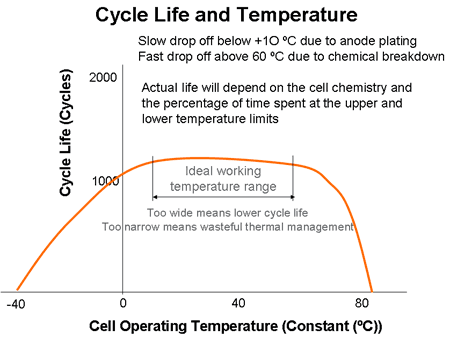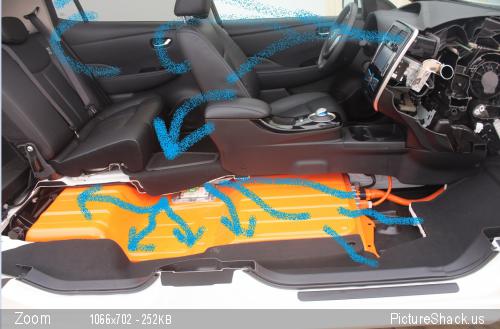dhanson865 said:
Sorry, I don't know where you are getting these numbers from. 30C is way too hot for a Leaf pack. It might be optimal for providing power but it too high vs degradation.
Either you are looking at battery data for something other than the leaf or you are looking at theoretical data not observed data.
Real world data from actual leaf owners shows major issues with degradation at the temps you are posting about.
First of all don't put all Leaf batteries in one basket. I should mention again, that the newer
version is much more capable withstanding higher temperatures.
And nr2: Are you referring to operational temperature or ambient?
Average battery temperature tends to be up to 10C above ambient without rapid charges.
As I read real problems are in places like Phoenix:
Taking that average as ambient for many (no AC garages), 90F is 32C.
Like I mentioned 30C might be good for use, but it is not optimal for storage.
And 90F storage is already above that. As Leaf is being used every day
I suspect temp can easily go up to 40C. In shade. Because average temperature
is air at some height above the ground. Most Leaf are not white inside out.
And solar loading will not let battery (5-10C above ambient) to cool down.
Here were I live we often have cloudy weather and battery starts cooling down
few hours after driving. Temperature at 7am is often same at 3pm. This is why I
clearly see that temperature change.
And as you quoted me, 35C is above optimal
storage and 40C is upper edge.
Upper edge vs optimal upper edge - sorry, I used that incorrectly. I'll rephrase:
30C is optimal
working temperature
40C is maximum optimal
working temperature
30C is maximum optimal
storage temperature
35C is above optimal
storage and 40C is upper edge (imagine thermometer with last dash value 40C)
Those two different limits (one for storage other for cycling)
must be obeyed simultaneously if car is not stationary
(and stationary means that SOC is 30-60% no cycling 24/7). If first limit is exceeded (storage limit) then there is
degradation that happens because of that (let's call that S-degradation). And if the other limit is exceeded then
degradation that happens because juice is cycled in and out (let's call that C-degradation). In this case if C temp
is exceeded S temp is heavily exceeded.
It is important to know the difference because dominant degradation that happens when battery is cold is C-type.
Dominant degradation that happens with hot batteries is S-type.
Therefore using Leaf nonstop with chemistry at fixed 40C is more reasonable than not using heavily.
On the other side 3 years at -15C is OK but any usage at -15C makes things much worse (C lower limit exceeded).
At fixed -15C a lot of C-degradation happens. Luckily there is a heater that won't let the worst to happen.
Here in Estonia we have moderate summers with 20C day/night average. We do have Leafs that are
super heavily used. Battery can heat up to 9-10 bars easily. But there is not a lot of degradation. And those are
first generation Leafs with old battery. Why? Because S-degradation is not speeding up with heavy usage.
Those Leafs always cool down very rapidly in our weather (delta T is huge, especially at night). 1 week in Phoenix
(24x7=168h) is like one whole summer of heavy usage here.
Numbers I write are not black and white (those are not hard limits). And they are definitely not specifically for 2011-2012 batteries.
Also it is hard for me to believe that there is a big fleet of users who always monitor their battery temperature with LeafSpy.
Those summaries that are available (lost 1-2-3-4-5 bar list for example) also show many who have lost slightly above normal
capacity. It shows that different scenarios give different results (like heavy acceleration or parking in shade).
I would like to see more data with average cell temperature, SOC and DoD behavior rather than just mileage and hometown.
Like I mentioned above heavy discharge has more effect and is heavily exothermic. Maybe it has more effect than we used to think.




